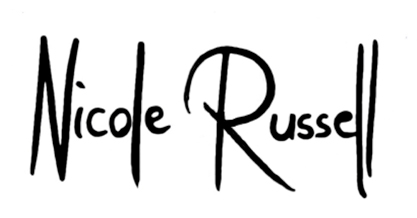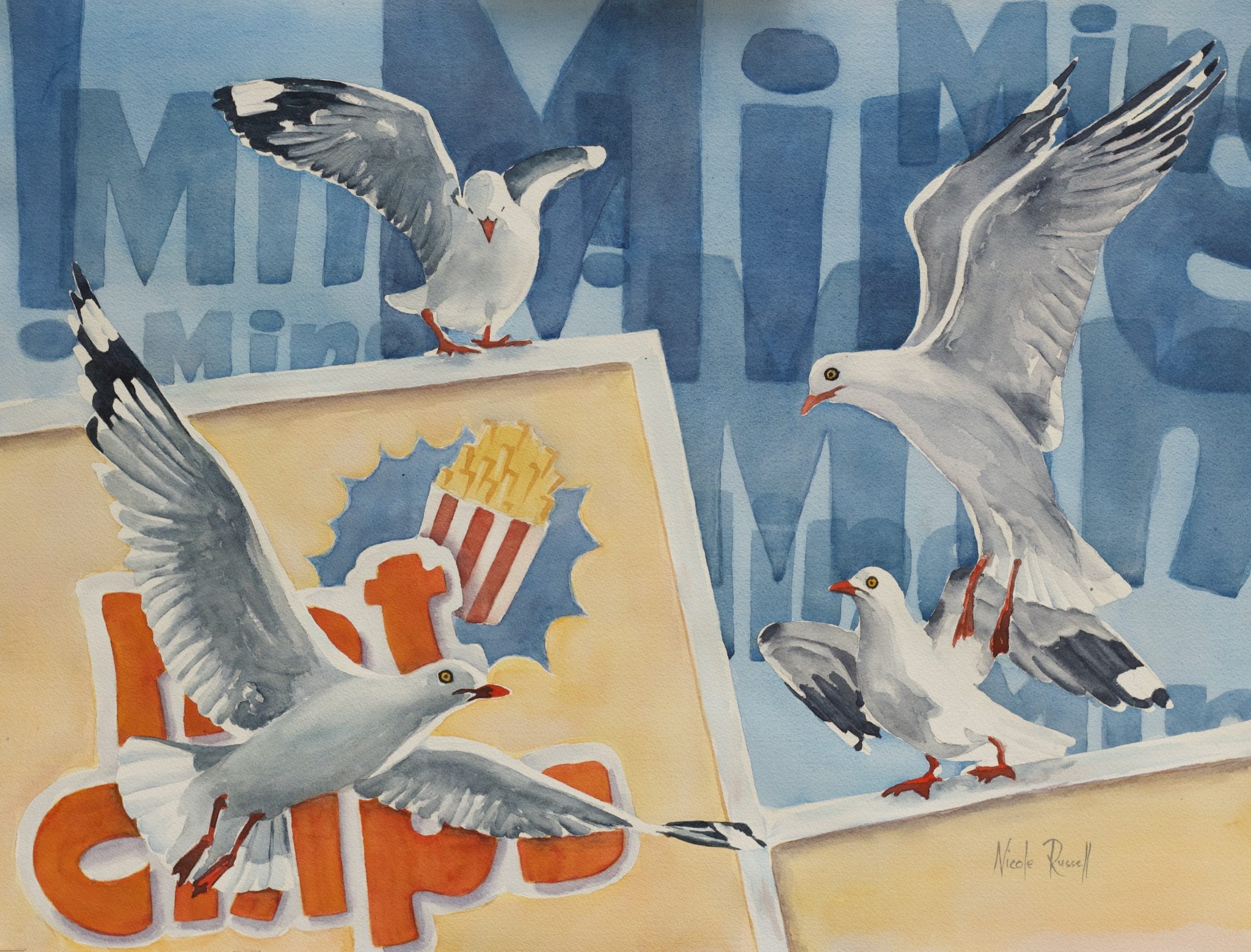
Hot Chips Are Mine!
Today, I finally finished Hot Chips Are Mine! Since the lockdown has started I could take advantage of the unexpected time available in my studio to paint. Still, I miss teaching and therefore thought I might share how I created this painting. I know it’s a watercolour painting but most of the principles apply to oil and acrylic painting as well:
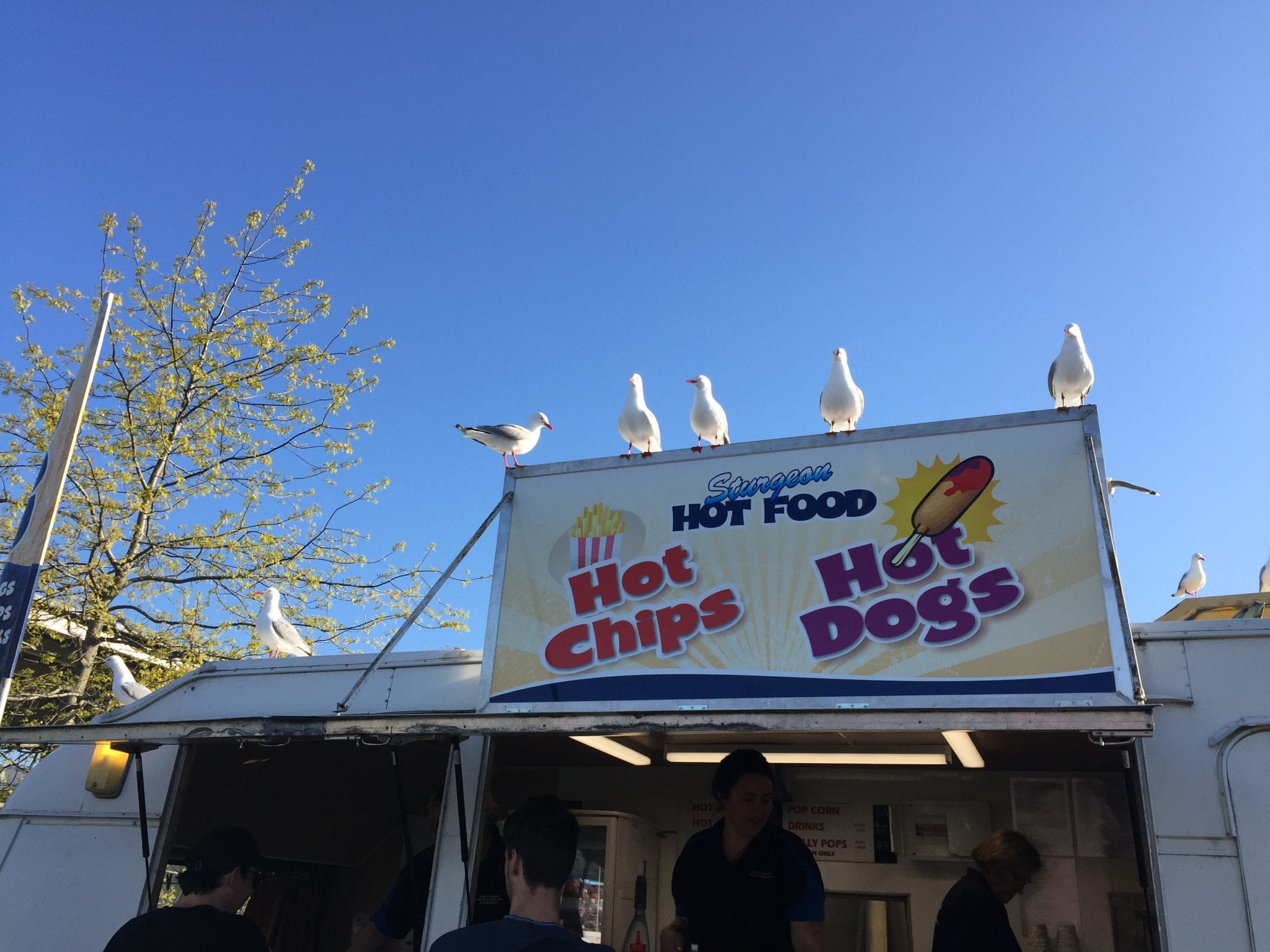

Some of our creative ideas come to us unexpectedly just by observing our environment and that is what happened for this painting: I was in the queue to get some hot chips at a rugby game in Nelson. The colours of the signboard, sky and the seagulls caught my eye and I quickly took some photos. I could hear the seagulls whisper “Mine? … Mine … MINE!!!”
Visual Diary – Planning
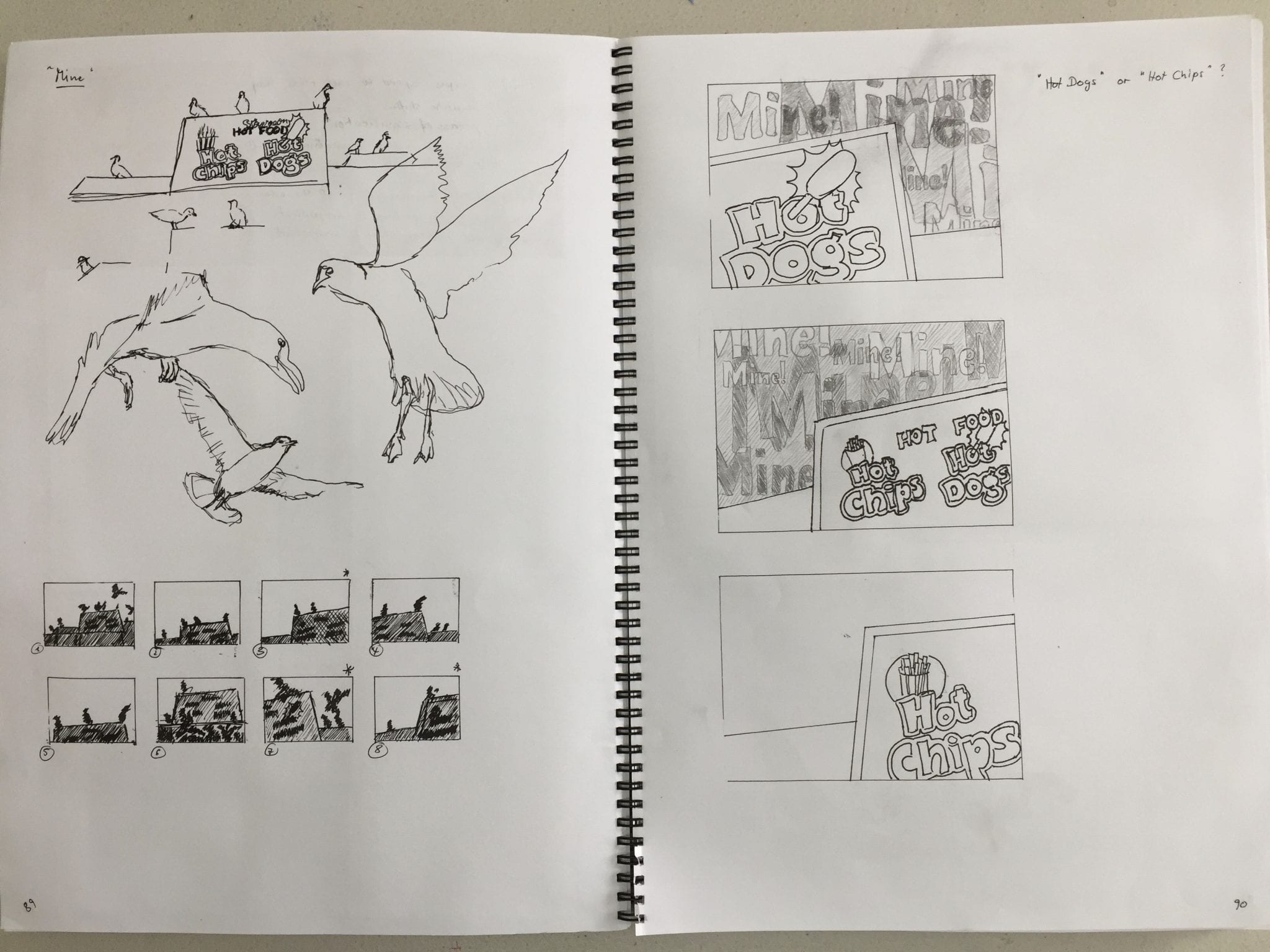
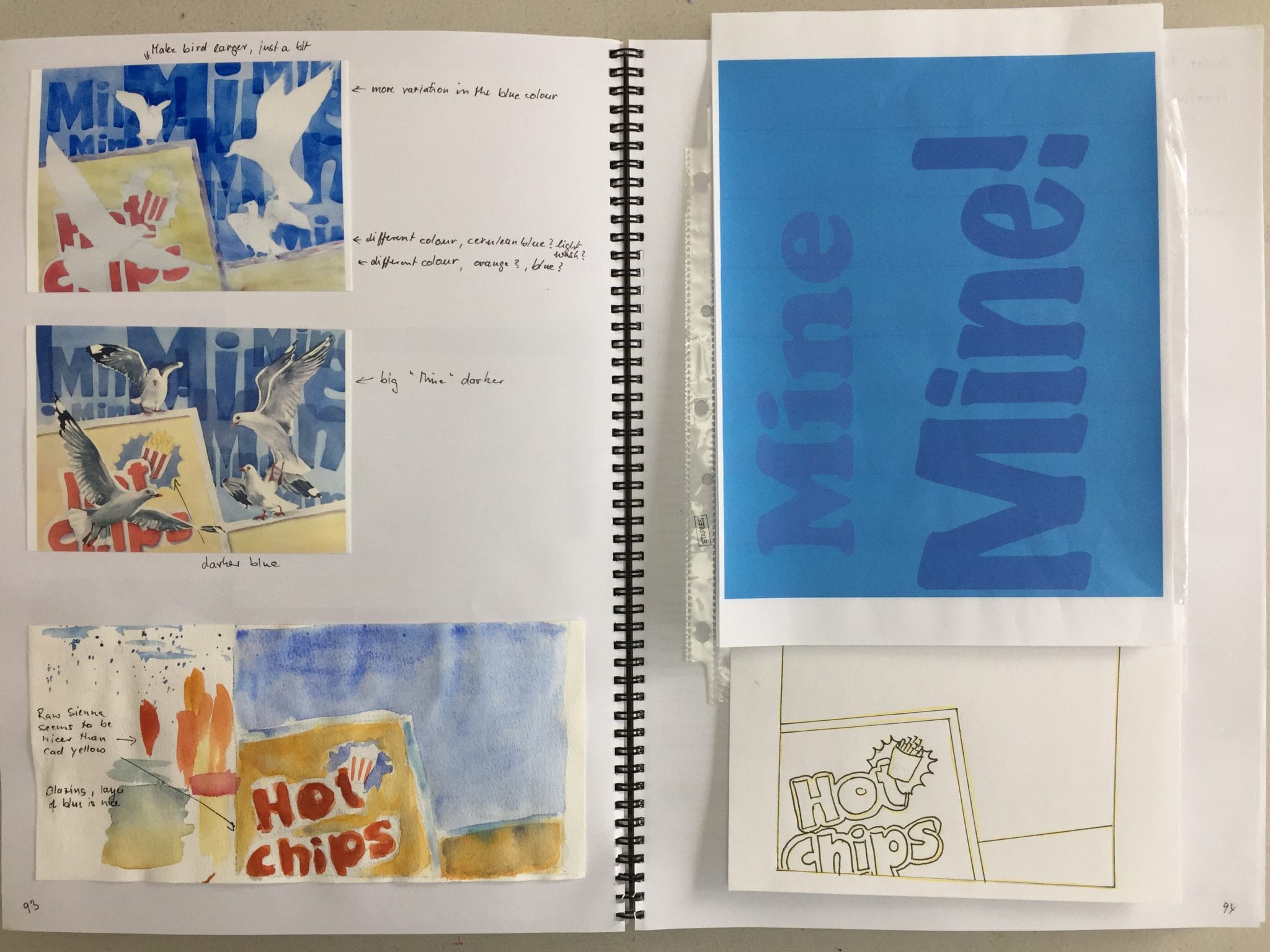
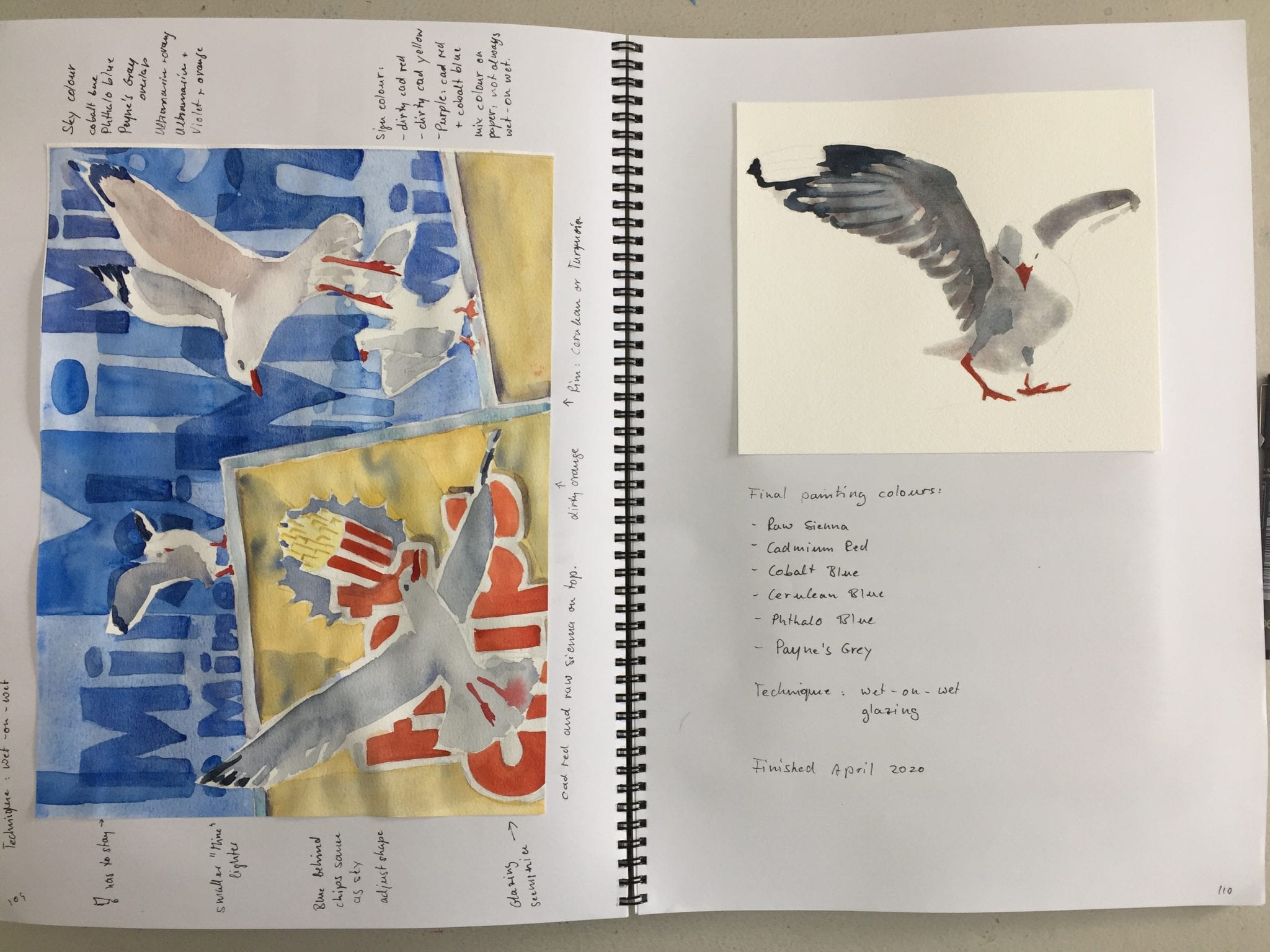
The next step after taking photos is a lot of sketches in my visual diary. The photos are not interesting enough for a painting but a good start. I have an idea in my head, but will it work? How shall I execute it? What is the composition? How do I create colour harmony? My visual diary has always helped me develop the answers to these questions. Usually I start with some general sketches to learn the subject, in this case the seagulls and the structure of the sign. This will tell me the main characters of my scene. Next, I do eight thumbnail sketches showing the subject in different compositions. Why eight? Because four sketches are easy, at the fifth the wheels start screeching and number 7 and 8 seem impossible. Not always, but very often the last two sketches are the most unusual and most surprising ones and this is what makes it so interesting. Number 7 turned out to be my favourite. Last, I will do a few test paintings to understand the colours that I like for my final painting. All this preparation work goes into my visual diary.
You might ask: “Why not start straight away with the painting? Why go through all the time consuming effort with the visual diary?” Two reasons:
1. Working with the visual diary is fun! I enjoy the creative process with the drawings that slowly bring my subjects to life. Also, I enjoy the memories that it creates when I look back at my previous works. These diaries are such a treasure.
2. I doubt that it takes any longer than starting a painting straight away. How many times have you started a painting and then all of a sudden realised that the drawing wasn’t quite right and needed fixing. Next, maybe you run into some issues with the composition? Again, more time is needed to deal with this problem. Finally, you might have to rework the colours when the harmony wasn’t quite right. In the end you spent a lot of time on the same painting trying to recover all those little emergencies. If you are unlucky the painting doesn’t speak to you any more and it will never be finished. If you are lucky, you finish it, but there are these areas that lost their fresh look because they have been overworked. Once, I had to paint the same painting a second time because I overworked it and it wasn’t fun. The visual diary takes care of all these issues before you start the painting. Your final work will be a breeze and look fresh.
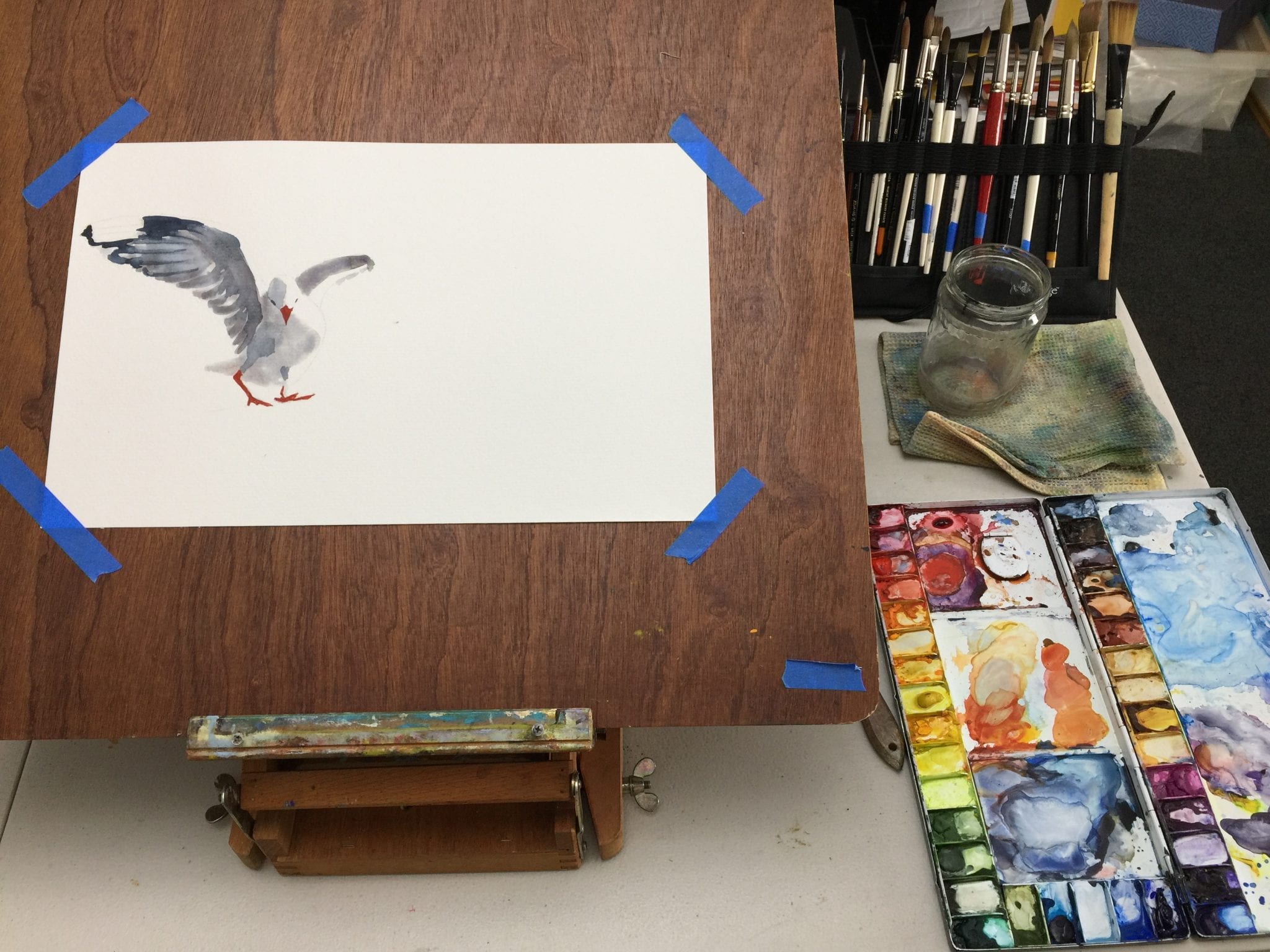
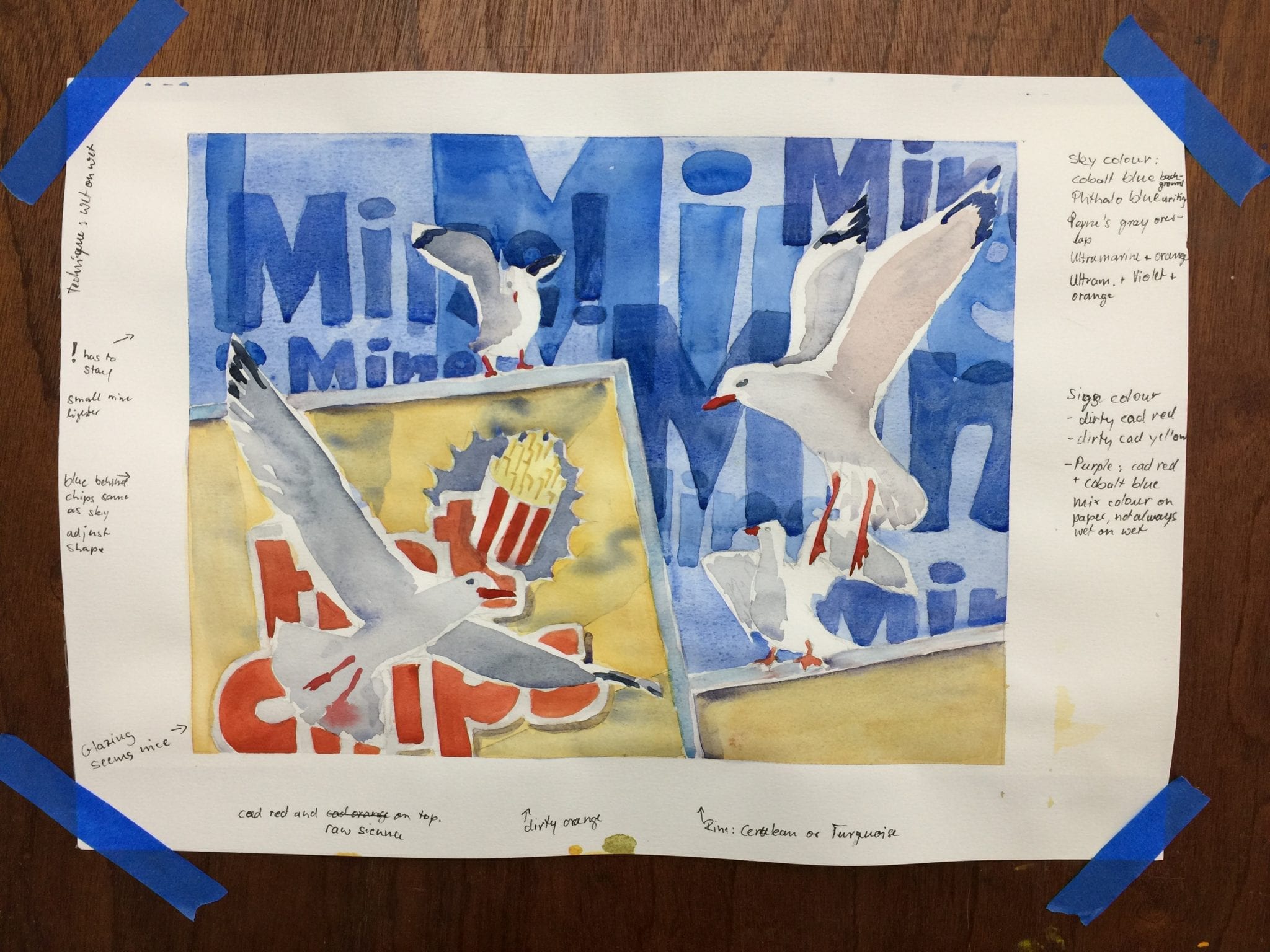
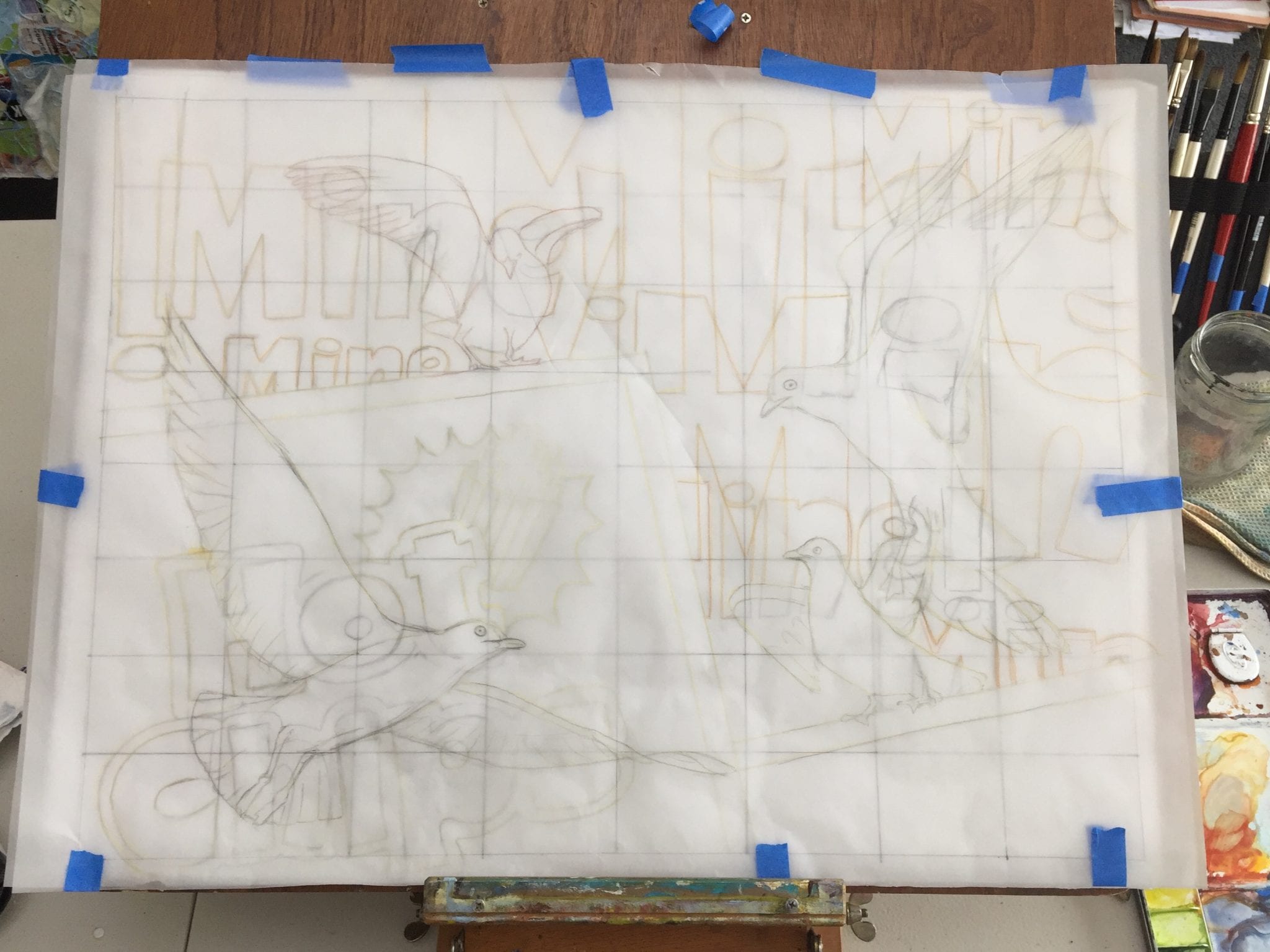
These are my little test paintings that helped me understand the painting technique, colours and materials. The smaller version of the final painting became my template for a grid and transposing on a bigger watercolour paper. I prefer doing my drawings on transparent paper rather than the watercolour paper itself. This way I won’t smudge the watercolour paper with eraser marks. To transpose the final drawing I use carbon paper.
Material
Winsor & Newton Professional Watercolour, Rembrandt Watercolour
Arches Watercolour Paper cold pressed, 46cm x 61cm (block)
Painting technique
Wet-on-wet and a lot of glazing
Colours
Raw Sienna
Cadmium Red Medium
Cobalt Blue
Cerulean Blue
Winsor Blue Red Shade
Payne’s Gray
Phthalo Turquoise
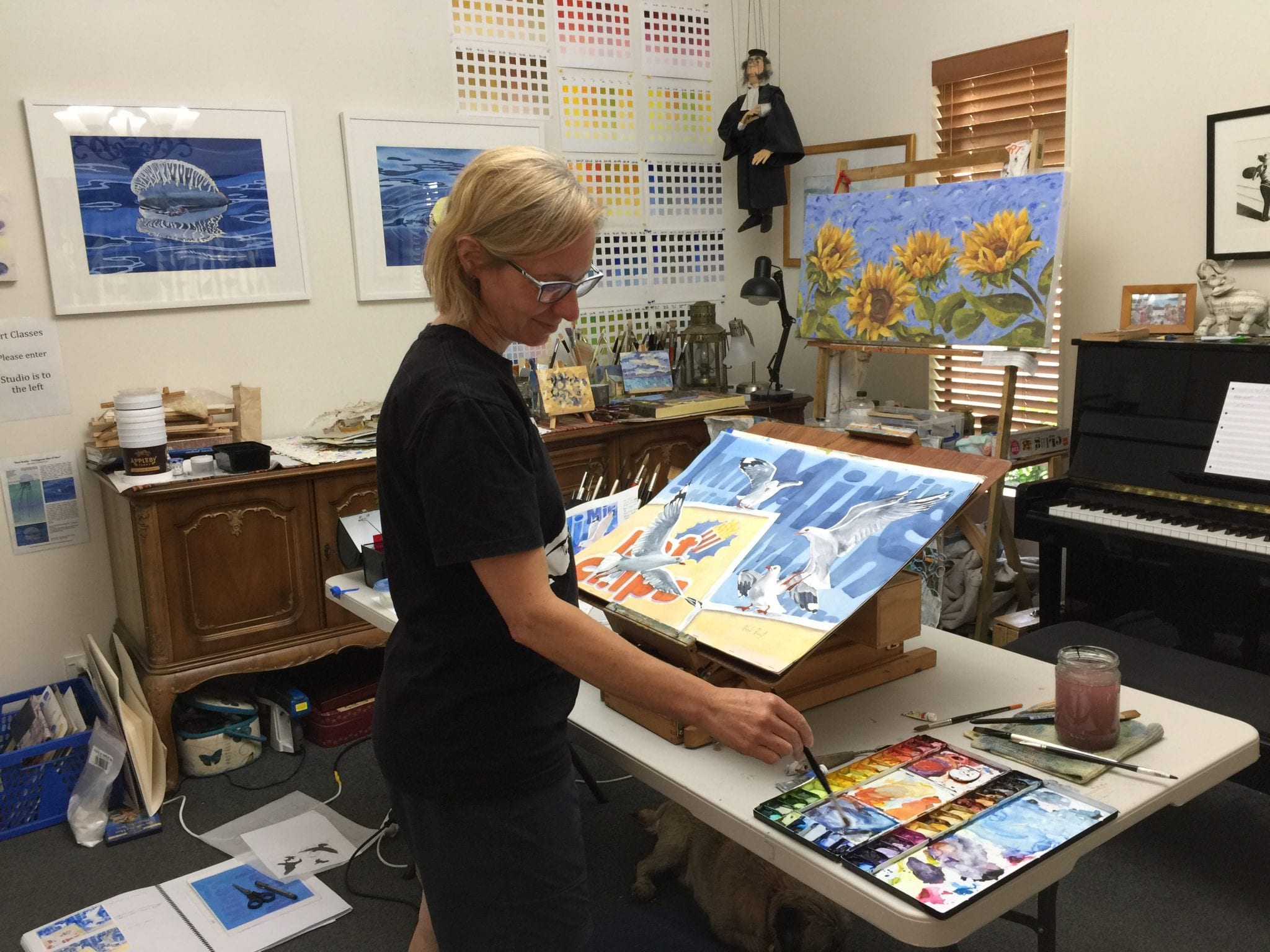
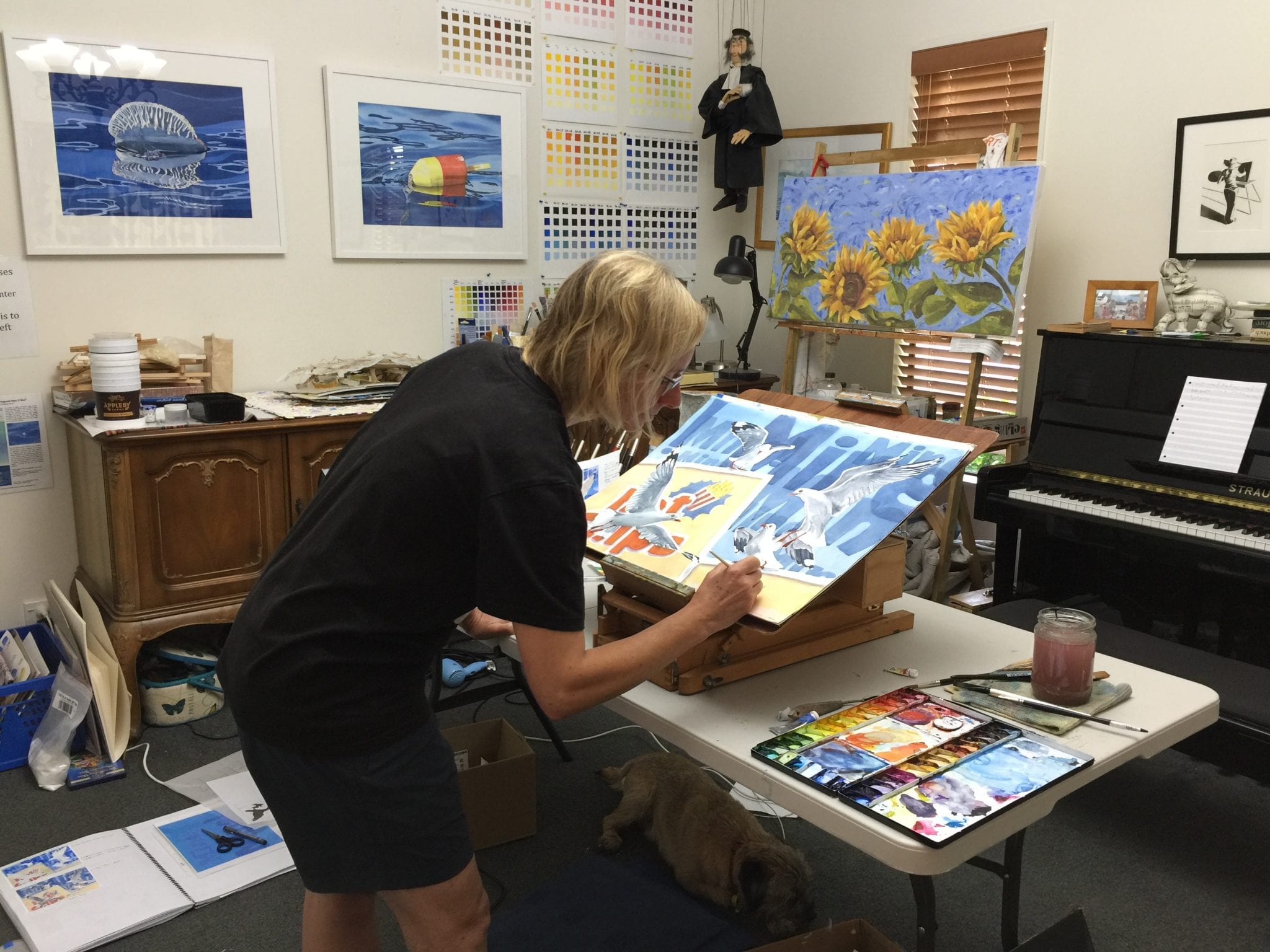
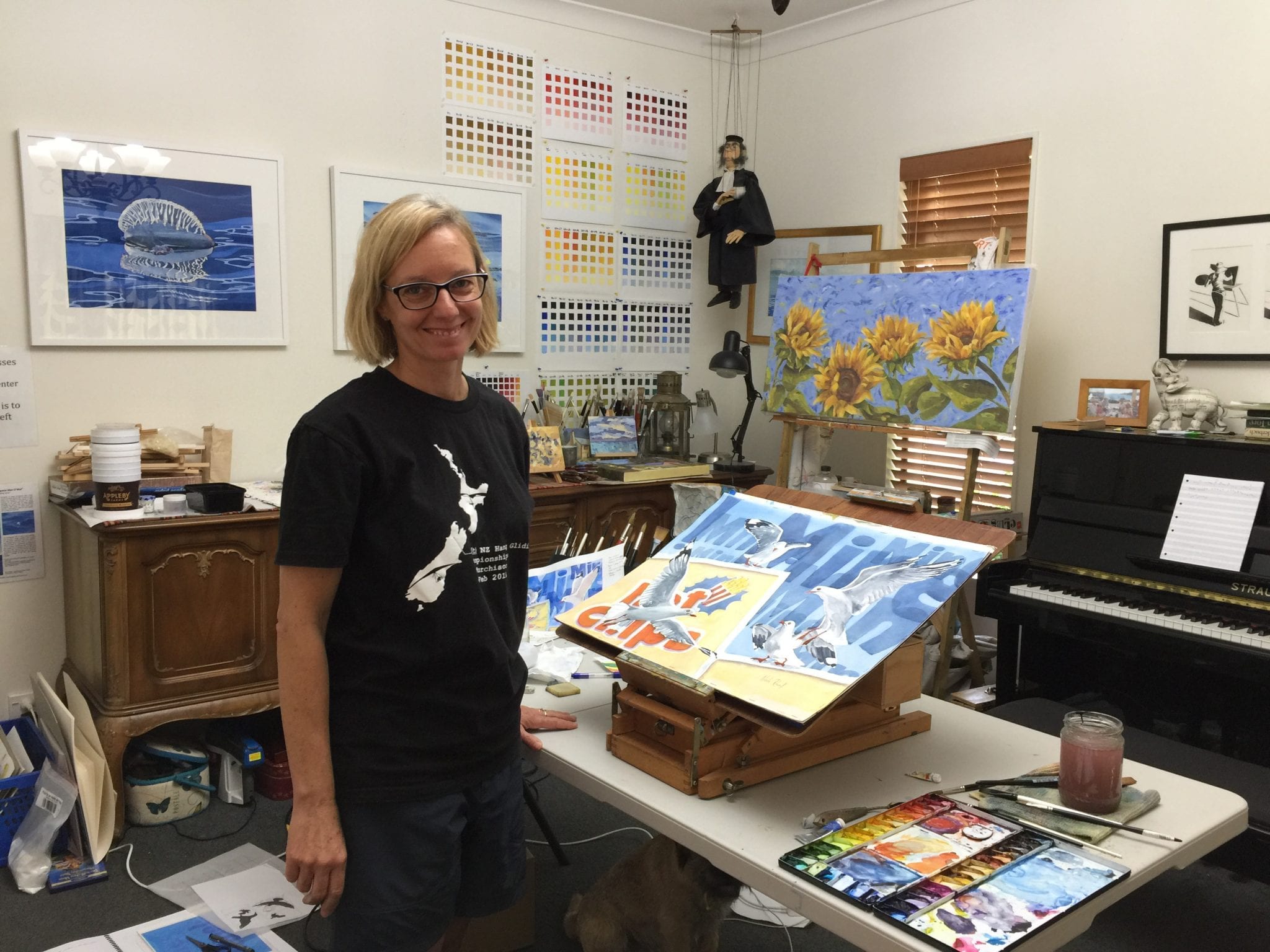
Final touches, as you can see I like keeping my painting at a slant. Gravity is your friend when it comes to watercolours. The paint runs to the bottom of your paint area and you can mop it up before it creates “cauliflowers”. Also, you can look at your painting at a better angle.
I like to stand when I paint. It allows me to step back and look at the artwork from a distance. When your painting works from a distance you have a winner.
Now, I only have to wait until the end of lockdown before I can have the painting scanned professionally and get the frame done. Finally, I will bring it to Wall To Wall Art Gallery, Nelson.
Contact me if you have any questions. Until then – HAPPY PAINTING!
